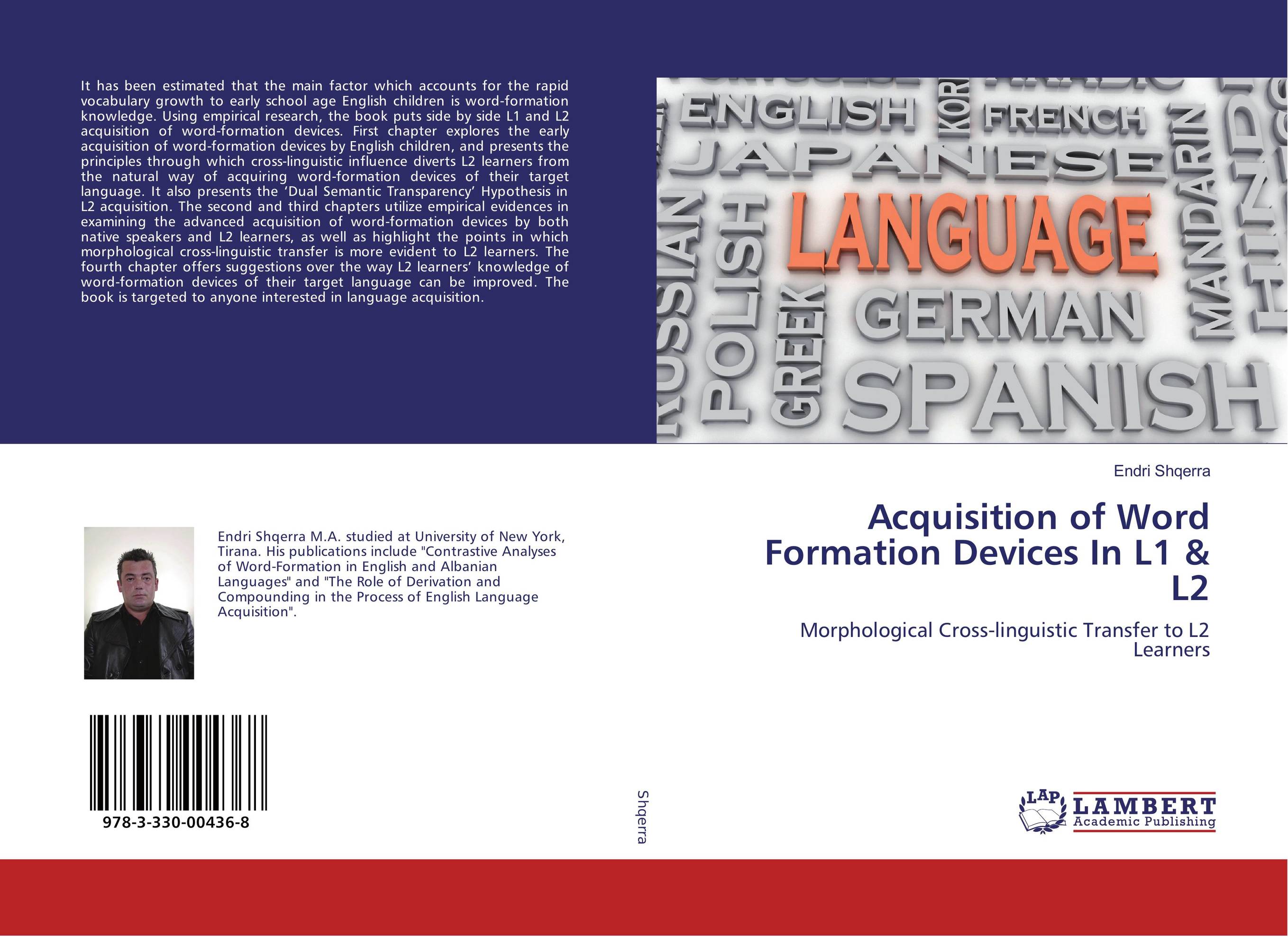| Поиск по каталогу |
|
(строгое соответствие)
|
- Профессиональная
- Научно-популярная
- Художественная
- Публицистика
- Детская
- Искусство
- Хобби, семья, дом
- Спорт
- Путеводители
- Блокноты, тетради, открытки
Acquisition of Word Formation Devices In L1 & L2. Morphological Cross-linguistic Transfer to L2 Learners

В наличии
| Местонахождение: Алматы | Состояние экземпляра: новый |

Бумажная
версия
версия
Автор: Endri Shqerra
ISBN: 9783330004368
Год издания: 2016
Формат книги: 60×90/16 (145×215 мм)
Количество страниц: 100
Издательство: LAP LAMBERT Academic Publishing
Цена: 29469 тг
Положить в корзину
Позиции в рубрикаторе
Отрасли знаний:Код товара: 165597
| Способы доставки в город Алматы * комплектация (срок до отгрузки) не более 2 рабочих дней |
| Самовывоз из города Алматы (пункты самовывоза партнёра CDEK) |
| Курьерская доставка CDEK из города Москва |
| Доставка Почтой России из города Москва |
Аннотация: It has been estimated that the main factor which accounts for the rapid vocabulary growth to early school age English children is word-formation knowledge. Using empirical research, the book puts side by side L1 and L2 acquisition of word-formation devices. First chapter explores the early acquisition of word-formation devices by English children, and presents the principles through which cross-linguistic influence diverts L2 learners from the natural way of acquiring word-formation devices of their target language. It also presents the ‘Dual Semantic Transparency’ Hypothesis in L2 acquisition. The second and third chapters utilize empirical evidences in examining the advanced acquisition of word-formation devices by both native speakers and L2 learners, as well as highlight the points in which morphological cross-linguistic transfer is more evident to L2 learners. The fourth chapter offers suggestions over the way L2 learners’ knowledge of word-formation devices of their target language can be improved. The book is targeted to anyone interested in language acquisition.
Ключевые слова: cross-linguistic influence, L2 Acquisition, L2 Learners, Language acquisition, vocabulary growth, L1 acquisition, word-formation devices, word-formation knowledge, morphological cross-linguistic transfer, teaching word-formation, native speakers.



